Whether you’re trying to make healthier dietary choices for yourself or your doctor has suggested that you cut down on your sodium daily sodium intake, you may feel as though you’re about to let go of all of your favorite foods. Hot sauce, for instance, is a staple product for a lot of people, but most of the popular brands of hot sauce have a high level of sodium per serving.
So do you have to give up your beloved hot sauce to cut down your sodium intake? Not necessarily. There are many low sodium hot sauces on the market for you to choose from, so you don’t have to sacrifice flavor for your health.
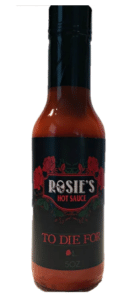

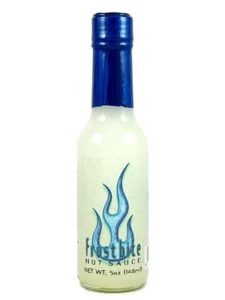


For more information on low sodium diets and our top five list of the best low sodium hot sauces on the market, continue reading.
Best Low Sodium Hot Sauces: Our Top Picks
Without further ado, here is our list of the best low sodium hot sauces:
1. Rosie’s Low Sodium Hot Sauce

The hot sauce is free of sodium, so you won’t have to worry about hidden ingredients that could cause you trouble. Made with ghost peppers, the To Die For hot sauce is not for the faint of heart.
2. Brother Bear Bru’s Organic African Chili Pepper Sauce

The sauce is a blend of African spices, giving it a perfect, one-of-a-kind flavor profile that would make a fun, fresh addition to your kitchen. With 20 milligrams of sodium per teaspoon, this hot sauce is on the higher end of the sodium spectrum on our list, but it can still be considered a low sodium option concerning traditional hot sauces.
3. Frosbite No Sodium Hot Sauce

Don’t let the name fool you; this little bottle packs punch. 100% sodium-free, the Frostbite Hot Sauce gives you all the benefits of a hot sauce without interfering with the integrity of your dish.
For any drinkers out there, Frostbite can also be used to add some spice to a cocktail without overpowering the flavor. However, it should be noted that if your doctor has suggested you try a low sodium diet, you have probably also been advised to limit your alcohol consumption.
Many hot sauce connoisseurs complain about the vinegar taste that many hot sauces have, which tends to overpower the dish, leaving a sour taste in your mouth. As a relatively flavorless hot sauce, Frostbite has eliminated the worry that any additional flavor will be fighting for tasters’ attention. It is a perfect fit for people who love spice but are having trouble finding a hot sauce flavor pallet that they enjoy.
4. Dave’s Gourmet Original Low Sodium Hot Sauce

This is another option best known for its flavor than for the level of heat it will add to your dish, but if you’re looking to add a dynamic flavor to your dish, this hot sauce is an excellent choice for you.
5. Trader Joe’s Chili Pepper No Sodium Hot Sauce

With zero milligrams of sodium per teaspoon, this hot sauce is an excellent affordable, and easily accessible option for those looking to spice up their cooking. Trader Joe’s has several different no sodium hot sauce options for you to choose from, so if you’re looking to experiment, this is a great and inexpensive way to try out multiple different hot sauces to see which ones are your favorites.
How We Picked No Sodium Hot Sauce
When looking for low sodium hot sauces for our list, we considered several factors. How spicy is the hot sauce? We know some people have a high heat tolerance, while others like the flavor of the hot sauce more than the spiciness factor. We tried to include options for low or sodium-free hot sauces for both the spice lovers and the flavor lovers out there, so there are options on our list for every type of consumer.
Next, we wanted to make sure that we were choosing hot sauces with truly low sodium products. All of our options have twenty milligrams of sodium or less per teaspoon. Plus, most of the brands we are featuring offer a variety of low sodium hot sauces, just in case you like to have different options or multiple flavors available for your guests.
Daily Recommended Sodium Intake
On the whole, humans consume more sodium per day than their bodies typically need. Sodium is a mineral that occurs naturally in many foods, but most of our sodium intake comes from salt or other preservatives used for processing pre-packaged foods.
The FDA recommends limiting your daily sodium intake to 2,300 milligrams per day, while the American Heart Association recommends limiting your intake to a maximum of 1,500 milligrams a day. For reference, one teaspoon of table salt has 2,300 milligrams of sodium in it. In other words, one teaspoon of salt will give you the daily recommended sodium intake.
The average American adult consumes 3,400 milligrams of sodium per day, which is significant;y higher than the FDA’s recommendation. High sodium intake is the leading cause of spikes in blood pressure, which can lead to significant heart problems in the future if left untreated.
If you have high blood pressure or a family history of cardiac issues, following the American Heart Association’s nutrition guide would be more beneficial for you. Your doctor will often take into consideration your family’s medical history when suggesting dietary or other lifestyle changes, so being aware of any noteworthy medical conditions in your family would be beneficial.
Salt is a crucial ingredient in many sauces and condiments that we use daily, making it easy to increase the level of sodium intake we are getting per meal. For instance, Frank’s Red Hot Sauce has a sodium content of 190 milligrams per teaspoon, and ketchup has 160 milligrams per tablespoon—both of which are products that the average consumer will use more than a single serving of per meal.
Salt is commonly used as a preservative for many pre-packaged foods; it’s what gives those foods longer shelf life and can even control the color and texture of the foods we eat.
Cutting down on your sodium intake would be easy if the only factor to consider was the amount of table salt you use during and after cooking. Unfortunately, salt and other sodium-rich products are key ingredients that have been ingrained in the way that companies prepare and process their products.
Why You Should Choose A Low Sodium Diet
In small doses, sodium can have a lot of health benefits. However, as an active ingredient in many of our favorite foods, it is incredibly easy to exceed the daily recommended sodium intake. When you’re ingesting too much sodium, it can lead to many severe health conditions, most notably, high blood pressure levels.
High blood pressure, otherwise known as hypertension, can lead to several other health problems if left unchecked. Your blood pressure levels directly affect your heart and can lead to chronic heart conditions, as well as heart attacks or strokes, which are often life-threatening. Hypertension can also affect your kidneys and cause an increase in headaches or migraine attacks.
White its prevalence in most dishes and pre-packaged food products, it would be idealistic to expect anyone to eliminate salts or sodium products from their diet completely. Unless your doctor has given you strict orders that say otherwise, it doesn’t have to be an all-or-nothing situation. Making a conscious effort to choose lower sodium products will go a long way to benefit your overall health.
If you have any health concerns that you feel result from something in your diet, speak to your doctor or a dietician before making any drastic changes. If you’re looking to cut out certain products from your diet, a dietician can help guide you through this change to ensure that you aren’t losing any valuable nutrients in the process.
There is no one-size-fits-all solution when it comes to healthier eating; what works for some people may not necessarily work for others.
Hidden Sodium Content: Things You Should Look Out For
Once you’ve decided to try a low or no-sodium diet, it’s time to do some research. Here are some things to look for when choosing low sodium foods.
Per Serving vs. Per Package
When you’re reading the nutritional information on a product, the values shown are per serving. For example, a box of crackers may list the sodium content as 104 milligrams per serving, but the serving size considers one serving equal to four crackers. Most people choosing to snack on crackers may not be limiting themselves to one serving if the suggested serving size is so small an amount.
To calculate the actual amount of sodium based on the number of crackers you’ve eaten, you will need to do some math. For example, if one serving is four crackers, and you eat twelve crackers, you’ve eaten three servings of the crackers.
To calculate the sodium content, you will need to multiple the sodium content of one serving by the three servings you’ve just eaten. So three servings of your crackers will have 312 milligrams of sodium.
It is also crucial for you to understand what is considered a low sodium content for a product. For a product to be considered a “low sodium” product, it needs to have a maximum of 140 milligrams per serving. Depending on the serving size versus the number of servings the average person will have in one sitting, this is still quite a lot of sodium.
Read the Ingredients List
With any dietary change comes a sudden need to become literate in the language of ingredients lists. Sodium comes in a lot of different forms. This list of chemical compounds includes sodium chloride (salt), sodium bicarbonate (baking soda), or monosodium glutamate (MSG), to name a few.
It’s essential to know all the different ingredients that contain sodium, even in trace amounts, so you don’t accidentally ingest something you shouldn’t be—especially if you’re on a more strict low sodium diet. Unwittingly eating something loaded with sodium you weren’t aware of can have detrimental impacts on your health if your body relies upon a low sodium intake.
For a complete list of sodium-laden ingredients you should be looking out for, you can read this article by the American Heart Association.
Be Wary of Buzzwords
Companies have entire teams of people dedicated to selling products. These teams know exactly how to advertise a product to make you think that it’s the right fit for you, but some of the claims on the product, while technically accurate, aren’t exactly what you’d expect them to be.
Words like “low/no sodium/salt” don’t necessarily mean that there is no sodium in the product. According to the FDA, a company can advertise that their product has no sodium provided that the product contains less than five milligrams of sodium per serving. In other words, there isn’t enough sodium in the product to be considered nutritionally relevant.
That being said, depending on the product and the realistic serving sizes, those five milligrams per serving can add up.
Phrases like “reduced” or “light” salt or sodium content are relative to the product in question. For example, if a ketchup bottle is marketed as reduced sodium, it is considered to have at least 25% less sodium than the original product or recipe. So if the original ketchup had 500 milligrams of sodium, the reduced-sodium option would have a maximum of 375 milligrams of sodium in it.
To be considered a “light” sodium option, the ketchup must have a minimum of 50% less sodium than the original. In this example, the light sodium ketchup would have a maximum of 250 milligrams of sodium.
Since these classifications are considered in relation to the actual product, there is the possibility for a product labeled as lightly salted or light in sodium could technically be considered a product that is high in sodium.
“No salt” or “no sodium added” are also common buzzwords that appear on the packaging of prepared or processed foods. This statement can be misleading for some people, as the phrase “no sodium added” does not mean that there is no sodium in the product.
Sodium occurs naturally in many foods, so the phrase “no sodium added” only means that there was no sodium added in the packaging or preparation process by the company. This means that any sodium in the product is the amount that naturally occurs in that food, with no added sodium for flavor or preservative use.
Related Article: Best Stir Fry Sauce To Buy
In Conclusion
When you’re first faced with the words “low sodium diet,” you may feel overwhelmed. Cutting salt and processed foods out of your diet is challenging, especially if you’ve grown to love some of those foods. Lowering your sodium intake doesn’t mean that you can’t enjoy your favorite foods, but rather that you should be more mindful of the dietary choices you are making.
Just because you are restricting your sodium intake doesn’t mean you can’t find substitutes for your favorite foods and condiments. There are plenty of low sodium options on the market that are just as good as the original options that you’ve come to know and love.
With a little bit of searching, you’ll be able to find the best low sodium hot sauce to replace your favorite hot sauces in no time. Now that you know how to spot possible hidden salt or sodium in the ingredients list, you are more prepared to decide what food you are eating.


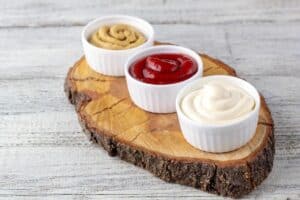
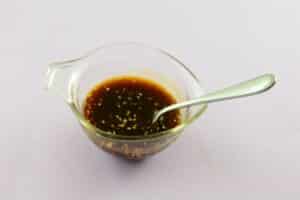
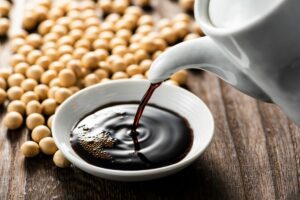
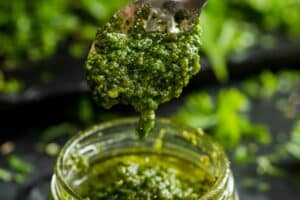
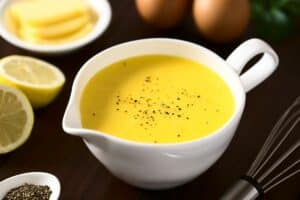

For more available mainstream hot sauces, Tabasco original and Valentina are great choices and both Huy Fong Sriracha and Chile Garlic sauce too.